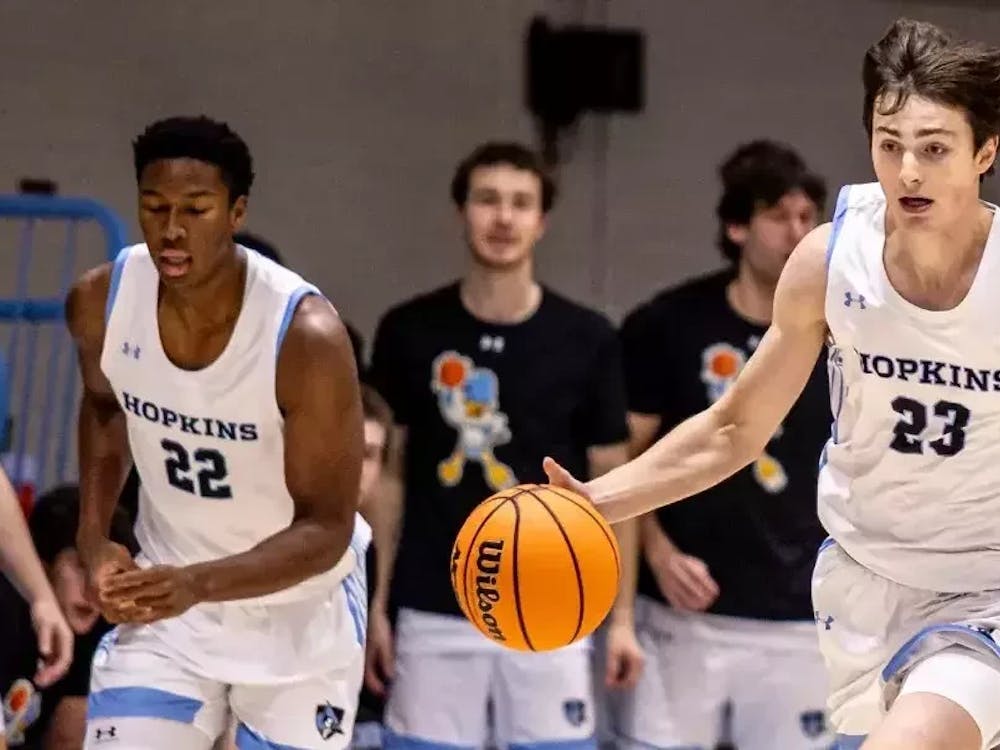When I first walked into the room, I realized that this would be an experience unlike anything I had ever encountered. All around me, figures covered in protective bogu and wielding long staffs (known as shinai) were descending upon each other in rapid, momentary bursts.
“Men!” I heard one of the armored figures shout out as his staff whirled through the air and struck the mask of his opponent with a resounding thud. Clearly satisfied with his effort, and having claimed victory in this brief melee, the figure walked over to me, still covered in armor. Removing his helmet to reveal a large smile, I recognized the warrior as my friend Marcos Bottenbley.
Filled with questions after this exhilarating experience, Bottenbley and I chatted about what I had just witnessed. What I’d seen was an ancient form of Japanese martial arts known as kendo.
The Kendo Club at Hopkins was the brainchild of Bottenbley and Sean Thompson, juniors who met as freshmen at Hopkins and immediately bonded over the prospect of bringing this exciting martial arts style to the Homewood Campus.
“We met freshmen year — we actually met on the Facebook group — and we had never talked before. He asked if anyone did kendo on the class group, and I replied that I did, and then we both realized that there was no club and decided that we should start one up. During the school year, he tracked me down, and we started the club,” Bottenbley said. “Honestly, Sean did most of the work and was really instrumental, but I’m proud to say that I helped out as well.”
After describing the origins of the club, Bottenbley explained the rules and scoring. In a style similar to fencing, the object of kendo is to score hits against your opponent, but these hits must be precise and can only target certain portions of the body.
“You have two lives, and if you lose both you are eliminated. The way you score points is by hitting either the head, the stomach or the wrist, and we call those the ‘Men,’ the ‘Do’ and the ‘Kote.’ Each move has to be done in a specific way, and you have to shout what you are hitting while you hit it. So for example, you would shout ‘Do’ as you were striking someone in their stomach,” Bottenbley said.
When asked to describe his favorite part of Kendo, he answered that nothing could possibly top sparring against another opponent:
“I like sparring the best — you actually get to practice what swordfighting would be like. Kendo is a very hands-on sport, and we are always sparring. There’s little practice outside of sparring. We can practice with a practice dummy by ourselves, but it’s not the same as fighting against an actual person. It’s all about reflexes, and you can learn all the different techniques pretty easily, so then after that it’s all about practicing those techniques in real competitions.”
There are 20 active members and weekly meetings on Thursday evenings, when club members learn new techniques and spar against one another. There is no doubt that this organization has been successful in bringing an interesting new martial art to the Hopkins campus. The founders of the club have set out two goals they want to accomplish before graduation. “We want to do two things, [the first of which is to] get into competitions, but first we want to get an actual sensei,” Bottenbley said.
“Sean and I both have experience, but we aren’t professionals. Neither of us have a Don. Don’s are ranks: The outside of your uniform doesn’t change, but it’s a rank. There are seven levels, and the seventh is only attained after death,” he explained. “The rest of them are completed through tests, and if you know the techniques, you can pass the test and obtain the next rank.”
Considering the dedication Bottenbley and Thompson have for their craft, it is likely that Kendo will be gracing the Homewood campus in the near future.




